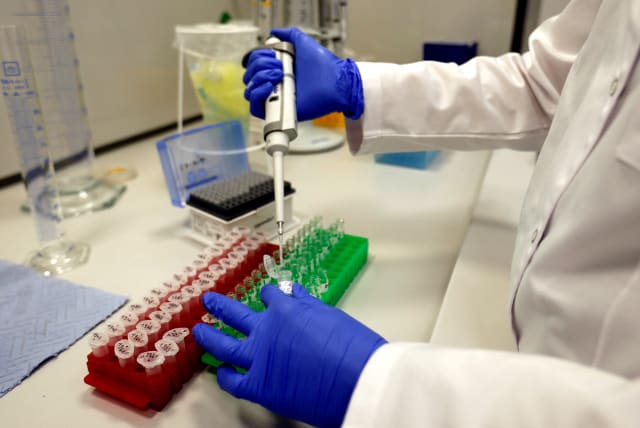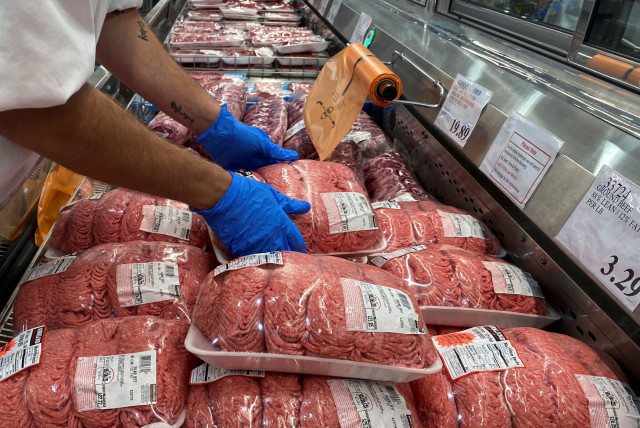Cultivated meat and kashrut: What will the Kosher status be? - opinion

The question of the kosher status of cultivated meat products carries great significance for the future of kashrut and may lay the groundwork for entirely new precedents in this area.
Even amid a war that is taking a heavy toll on all aspects of Israeli society, as a nation that desires life, we continue to march forward, build, and contribute to the world.
This was demonstrated by the January 17 approval by Israeli regulatory authorities of the commercial sale of cultivated meat. Israel thereby joins a select group of countries that have approved the commercial sale of meat grown from cells in a lab and becomes the first country to approve the sale of a food product containing beef cells grown in a lab.
It should come as no surprise that Israel is among the first countries to permit the commercial sale of such products, as we are blessed with a disproportionate number of start-ups in this emerging technology.
These companies include Aleph Farms, whose product was just approved, SteakHolder Foods, Meat.The End (MTE), and SuperMeat.
The common feature of all these technologies is that cells are taken from a living entity and then coaxed to differentiate and grow in the lab in order to produce a product similar in taste and texture to conventional meat.
Due to the novel nature of this technology, countries have struggled to decide which regulatory agency should be the one to license the product. For example, in the United States, it was debated whether it should be the Food and Drug Administration (FDA), The US Department of Agriculture (USDA), or some other agency, before settling for the USDA.
Ultimately, whoever is tasked with approving the product is faced with the daunting challenge of analyzing issues of toxicology, allergenics, nutrition, microbiology, and chemistry. In Israel, the US, and Singapore, where such products are now permitted for commercial sale, the determination has clearly been made that these products are indeed safe for human consumption.
The impact of this new technology on the Jewish world
So what happens next? In Israel and the Jewish world, a second set of criteria will need to be applied to the new product. Kashrut-certifying agencies and their halachic decisors will be tasked with determining the kosher status of these products. First, will cultivated meat be kosher at all? If answered in the affirmative, will it be considered “meaty” or parev?
What makes these questions so exciting and simultaneously so challenging is that there is little clear precedent in the vast sea of Talmudic literature on which to base these decisions. This technology is so novel and so paradigm-shifting that finding Talmudic and later sources that can be applied to these products is a challenge for even the sharpest of rabbinic minds.
Since the idea of cultivated meat first entered the public sphere about a decade ago, rabbinic authorities have been debating what its eventual kosher status would be. Initially, the discussion revolved around broad principles and general terms.
In recent years, however, with the advent of specific technologies, the halachic analysis has begun to hone in on these specific methods. It is critical to realize that every company has its own way of procuring starter cells, and their methods of replication and differentiation may differ greatly too. This means that sweeping statements such as: “cultured meat is kosher” or alternatively “cultured meat is not kosher”, “cultured meat is pareve” and the like are rendered meaningless. Such blanket announcements reveal a lack of understanding of the science at play and the complexity behind the issue.
It should be agreed upon by all that cultured meat can in principle be made kosher. Nothing inherent about the technology means that a kosher product cannot theoretically be created. If the starter cells were taken from a source that presents no questions about its kosher status and laboratory techniques do not introduce additional complications it is hard to see why the product would not be kosher. The question we should ask is what source satisfies these criteria?
The method used by Aleph Farms, a Rehovot-based company that recently garnered Israeli regulatory approval, provides a fascinating case study to examine this question. Perhaps predictably, it does not lend itself to an easy answer.
WHILE THEIR technology is highly sophisticated, the origin of the initial cells is straightforward. Aleph Farms use a technique that was perfected in the dairy industry of washing out from a cow’s uterus a several-day-old pre-embryo prior to implantation and then harvesting pluripotent stem cells.
What makes this so interesting from a halachic perspective is that the cells are derived from within a living cow. In general, a limb or flesh that comes from a living animal is not kosher.
On one hand, this pre-embryo has not yet been implanted and might thus be seen as separate from the cow. On the other hand, just a few days earlier it had still been an integral part of the ovary, thoroughly attached to the flesh of the cow, and if left alone, would, in a few days attach to the uterine wall and again be part of the cow.
In all likelihood many would agree that if the egg had been taken from the ovary, it and anything that came from it would not be kosher. Furthermore, if the cells had been extracted from an implanted fetus, those cells, deriving from a living being, would similarly be not kosher. The big question is what happens during the intermediate stage?
Can the prohibition that existed at the time it was part of the ovary disappear and then just as suddenly reappear once it implants?
This essentially appears to be the position held by Israel’s Ashkenazi Chief Rabbi David Lau. Following a visit to Aleph Farms last year, and basing himself on an enigmatic Talmudic passage, Rabbi Lau suggested that a fertilized cow egg that is soon to be implanted is deemed by Jewish law to be a “waste product” and is not considered an integral part of the animal. Such a determination would pave the way for the product to be considered kosher. However, many eminent halachic authorities have differed with this conclusion.
This is partially because there could be disagreement about some of Rabbi Lau’s supporting scientific statements, such as the suggestion that most eggs, even fertilized eggs, are spontaneously expelled, and partially because of competing understandings of that Talmudic passage.
These other halachic decisors contend that Aleph Farms could avoid halachic questions and produce a product acceptable to even the most discerning kosher consumer if they stick with their technology, but use starter cells derived from a pre-embryo washed from a cow uterus after the cow is kosher slaughtered. Slaughtering one cow would yield untold tons of cultivated meat, which bodes well for consumers, cows, and the environment.
It is appropriate that Israelis should be proud and excited by this recent development and demonstration of Israeli technological prowess. Kudos to both Aleph Farms and the regulatory authorities. But this must be accompanied by a degree of caution. The question of the kosher status of cultivated meat products carries great significance for the future of kashrut and may lay the groundwork for entirely new precedents in this area.
As such, it behooves all those involved – halachic decisors and local and international kashrut agencies such as the Orthodox Union, the badatzim (major rabbinical courts of justice), and of course the Israel Chief Rabbinate – not to rush to judgment.
A decision of such magnitude cannot be reached by any one individual alone. We sincerely hope that through deliberate, thoughtful, and considered analysis, a consensus view on this matter will emerge.
Ari Zivotofsky is a professor of neuroscience at Bar-Ilan University. Joel Kenigsberg is the rabbi of the Beit Knesset Hanassi synagogue in Jerusalem. The two are experts in kosher aspects of cultured meat and have published and lectured about the subject internationally.
Jerusalem Post Store
`; document.getElementById("linkPremium").innerHTML = cont; var divWithLink = document.getElementById("premium-link"); if (divWithLink !== null && divWithLink !== 'undefined') { divWithLink.style.border = "solid 1px #cb0f3e"; divWithLink.style.textAlign = "center"; divWithLink.style.marginBottom = "15px"; divWithLink.style.marginTop = "15px"; divWithLink.style.width = "100%"; divWithLink.style.backgroundColor = "#122952"; divWithLink.style.color = "#ffffff"; divWithLink.style.lineHeight = "1.5"; } } (function (v, i) { });

